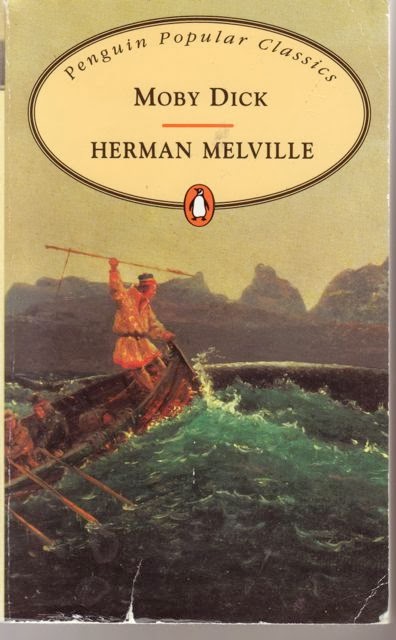27 november kunde jag nöjt konstatera att jag faktiskt läst HALVA boken.

Sedan tog jag julledigt.
7 januari tog jag nya tag:
Efter två avslutande kapitel om valar i konsten:
Chapter 56 ss 263-266 : Of the Less Erronous Pictures of Whales, and The True Pictures of Whaling Scenes
Chapter 57 ss266-68 The Whales in Paint; in Teeth; in Wood; in Sheet-iron; in Stone; in Mountains; in Stars
blir det så äntligen dags för litet valfångst:
Först några informerande k. om verktygen:
Chapter 58 ss 268-271: Brit
Chapter 59 ss271-273: Squid
Chapter 60 ss 273-276 The Line
Sedan FÅNGSTEN!

Chapter 61 ss 277-281 : Stubb Kills a Whale
Chapter 63 ss 283-284 : The Crotch
Chapter 64 ss 284-290: Stubbs´s Supper *
Chapter 65: ss 291-293 : The Whale as a Dish
Chapter 66: ss 294-295 : The Shark Massacre
Chapter 67 ss 309-297: Cutting In
Chapter 68 ss 297 – 300: The Blanket
Chapter 69 ss 300 – 301 : The Funeral
Chatter 70 ss301-303: The Sphynx
Chapter 71 ss303-309 The Jereboam Story
När jag går in på nätet för att kontrollera finner jag att jag inte är ensam
om mitt sätt att tillgodogöra mig detta mästerverk!:
– Det finns en grupp som tillsammans läser fyra sidor per dag!
– Åtskilliga referat av boken med kommentarer kapitel för kapitel
EX 1

EX 2: Moby Dick Summary and Analysis:
* Chapter Sixty-Four: Stubb’s Supper:
”The three boats begin to tow the whale to the Pequod. The task takes hours, for the whale seems hardly to budge at all. Captain Ahab seems to be somewhat dissatisfied, as if the sight of the dead whale reminded him that Moby Dick is still alive and no matter how many whales were brought to the ship, he would not be satisfied until he found that one. Stubb feels a sense of good-natured excitement. About midnight the steak of the whale is cut and cooked. Stubb believes that the steak is overdone, and he orders the cook, Fleece, to make the crew behave more politely. Stubb questions Fleece about his origin, and he claims Roanoke country. He asks Fleece where he expects to go when he dies. Fleece says that he will go ’up there,’ but Stubb tells him that he cannot expect to get into heaven by going the wrong way (he uses the metaphor of ’going to the main-top’ of the ship to mean ’going to heaven’).
Analysis:
Melville imbues even the simple conversations among the crew members with religious connotations, in this chapter demonstrated by the banter between Stubb and Fleece concerning where Fleece will go once he dies. This continues the dominant themes of the novel, including mortality and the use of the whale ship as a symbol of larger human experience.
Along with Queequeg, Melville holds Stubb as a model for human behavior. Melville clearly relishes Stubb’s good humor and flamboyance, which enhance his demonstrated competence as a whaler. He has a boisterous attitude that Melville portrays as endearing, as compared to the dour gravity of Ahab. For Melville, Ahab’s tale is one of tragedy, while Stubb stands as his direct contrast, a man who is not consumed by the same demons that afflict Ahab. ”
Liksom när jag lyssnar på Jonas, befinner jag mig således som läsare av Moby Dick i ett world-wide nätverk!
Ur Telegraph 18 October 2012:
”Moby-Dick was published 161 years ago today in Britain – it came out in America later on 14 November 1851 – and is still considered one of the treasures of world literature. The anniversary is recognised today in a Google doodle (below).
The famous opening of Herman Melville’s masterpiece: ’Call me Ishmael,’ are the first three of 212,758 words in 38 (?)*’ chapters in a giant whale of a book, which was on President Barack Obama’s recent reading list.”
** I min bok finns det 135 kapitel!























